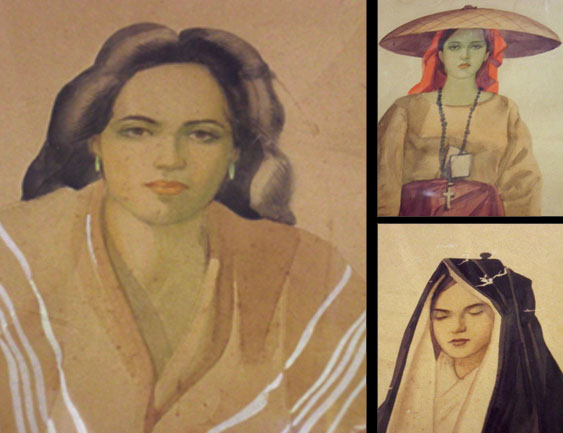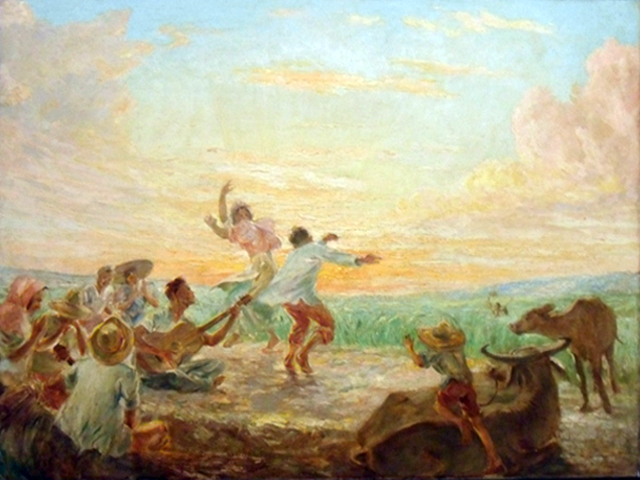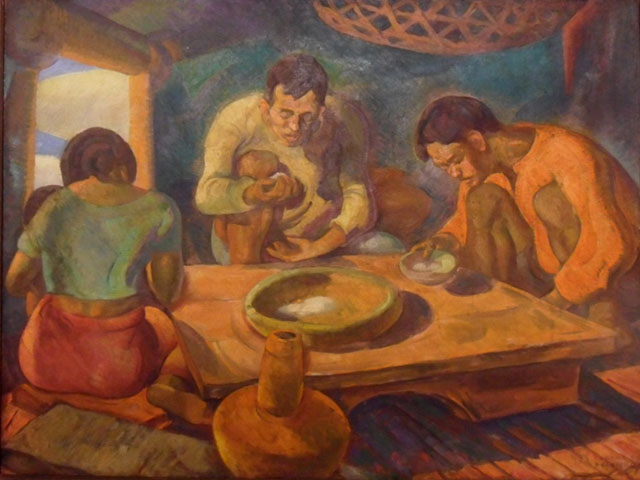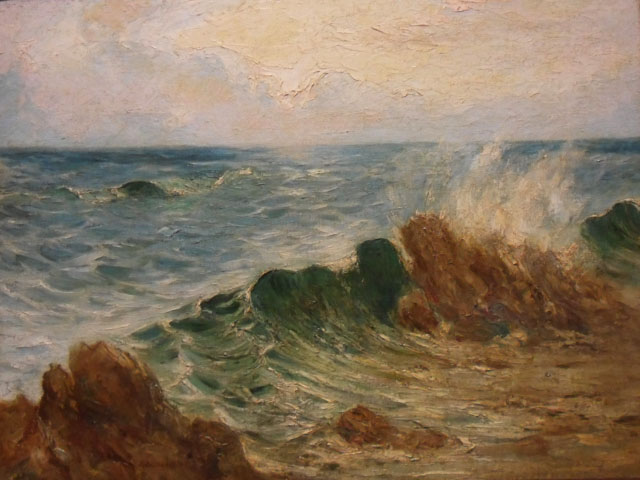Filtered by: Lifestyle
Lifestyle
Botong and Puruganan: Rediscovering the two 'Moderns'
Text and photos by ROSE-AN JESSICA DIOQUINO

Women sketches. The different faces of women, as "Botong" saw them from history (from left, clockwise): "Mestiza Española 2" (watercolor on board, undated), "Filipina with Salakot" (watercolor on paper, 1930), "Colegiala" (watercolor on board, undated).
In the age of digital art, noise, and billboards, it is fascinating to walk into the quiet, stand in the middle of tangible history, and think, “Ah, so this is how ‘modern’ used to look.”
And it has to be noted that you're surrounded by the works of two of the best artists this country has produced.
Housed at the University of Santo Tomas (UST) Museum, the “Botong & Puruganan: A Double Centennial Tribute” exhibit features the works of Carlos "Botong" Francisco and Ricarte Puruganan, two of the "Thirteen Moderns" that promoted "the vision of Modern Art in the country,” breaking away from the conservative, realist style of, more prominently, Fernando Amorsolo.
The showcase, according to the UST Museum, is its way of commemorating the 100th birth anniversary of the artists—both born in 1912—who were former professors at the old UST College of Architecture and Fine Arts (now split into two colleges, Architecture, and Fine Arts and Design, but still housed in one building) and considered "important figures in the history of UST."

"Untitled" by Puruganan (oil on board, 1940, from the UST Museum Art Gallery)
At a glance, the exhibit shows a slight contrast between the two artists, both of whom are known for art in public spaces—Francisco for historical murals and Puruganan for sculptures and structures.
One is welcomed into the exhibit by the works of Puruganan (born November 12), merely seven items that had lighter shades and were mostly scenic: two paintings of a volcano (but only one was titled "Mayon Volcano"); "Breakers", which shows how waves hit rocks on the bay; and the simple and small but captivating "Moonlight” (Oil on Fiber Board, 1940), which through the subtle blending of hues show a speck of the moon reflecting on blue-green waters.
In the middle of Puruganan's portion is the biggest artwork in his collection, an untitled work dated 1940 that shows a group of farm people entertained by a man and a woman dancing while the sun set.
In an e-mail to GMA News Online, UST Museum collection management and documentation assistant Maita Oebanda said the limited number of Puruganan's works shown there "do not reflect the artist's volume of work."
She added: "He is known to have designed and created many public works in different media, including structures and monuments, particularly in his home province of Ilocos Norte," where Puruganan retreated with his family after an alleged "discrimination" from the new administration of the then UST School of Fine Arts in 1950.

"Give Us This Day" by Botong Francisco (oil on canvas, 1938, from the UST Museum Visual Art Collection)
The muralist
As you step farther into the exhibit, you will get the vibe that it was somehow "Botong"-centric, with a wider collection that occupied at least three-fourth of the whole exhibit area.
This portion—a combined collection of the UST Visual Arts Museum and that of Dr. Norberto Martinez of the UST Hospital's Hearing and Dizziness Center—gives a glimpse into the creative process of the renowned muralist (born November 4), who was named National Artist for Painting in 1973, four years after his death.
The few paintings in the exhibit are all bolder in color compared to Puruganan's, portraying the farm life in various aspects (as also reflected by the titles like "Sinigang", "Orasyon", and "Under the Mango Tree").
But the real treat is the glimpse into Francisco's creative process and correspondences, as shown by a few letters he wrote to his personal physician, Dr. Jose Abad, who also kept some of his works; and the sketches he made, including costume designs for Manuel Conde's 1950 masterpiece Genghis Khan.
(In the coffee-table book “The Cinema of Manuel Conde,” which accompanied the framed sketches of costumes, Francisco was described as the filmmaker-actor's "bosom friend," credited for "much of the success of Conde's costume pictures, from ‘Prinsipe Paris’ to ‘Genghis Khan’ to the ‘Juan Tamad’ films.")
The collection also has the framed study, a miniature, of "Filipino Struggles Through History," the mural at the Bulwagang Katipunan of the Manila City Hall; and rough "drafts" for his biggest mural, "500 Years of Philippine History", which won international acclaim and was featured in Newsweek news magazine.
On the second floor of the museum stands the photo exhibit “Carlos "Botong" Francisco and the Angono Environs,” a collection of photographs taken by the late Richard "Dick" Baldovino, the "dean of Philippine photography," who was known for taking portraits of National Artists.
The exhibit, a collaboration between the UST Museum and the Cultural Center of the Philippines (CCP) which owns the photographs, was first staged at the CCP Bulwagang Fernando Amorsolo from May 14 to June 3.
The framed black-and-white photographs show Botong at work and in life through the lens of a close friend—a simple artist dubbed as the "poet" of his native Angono, Rizal, who sketched on top of stationary boats and nipa hut roofs; mulled over one of his known works "Bayanihan"; played sungka with a young girl and billiards with a group of friends; and sat laughing with his wife.

"Breakers" by Puruganan (oil on canvas board, 1940, from the UST Museum Visual Art Collection)
'Appreciation, curiosity'
Oebanda told GMA News Online that the exhibit is their way of reintroducing the artistry championed by the Thirteen Moderns to the younger generation.
"The two artists... are credited [for] being iconoclasts as well as educators, and part of their legacy is that the University of Santo Tomas is known for being the cradle of Philippine modernism," she wrote. "The UST Museum hopes to present insights into the development of art, modernism, and nationalism through these gems of visual arts, and instill an appreciation for and a curiosity about the Thirteen Moderns in students of Fine Arts." –KG, GMA News
“Botong & Puruganan: A Double Centennial Tribute,” as well as the photo exhibit “Carlos ‘Botong’ Francisco and the Angono Environs,” may be visited Tuesdays to Saturdays, 8 a.m. to 4 p.m., at the UST Museum. It will run until October 24, 2012.
More Videos
Most Popular




